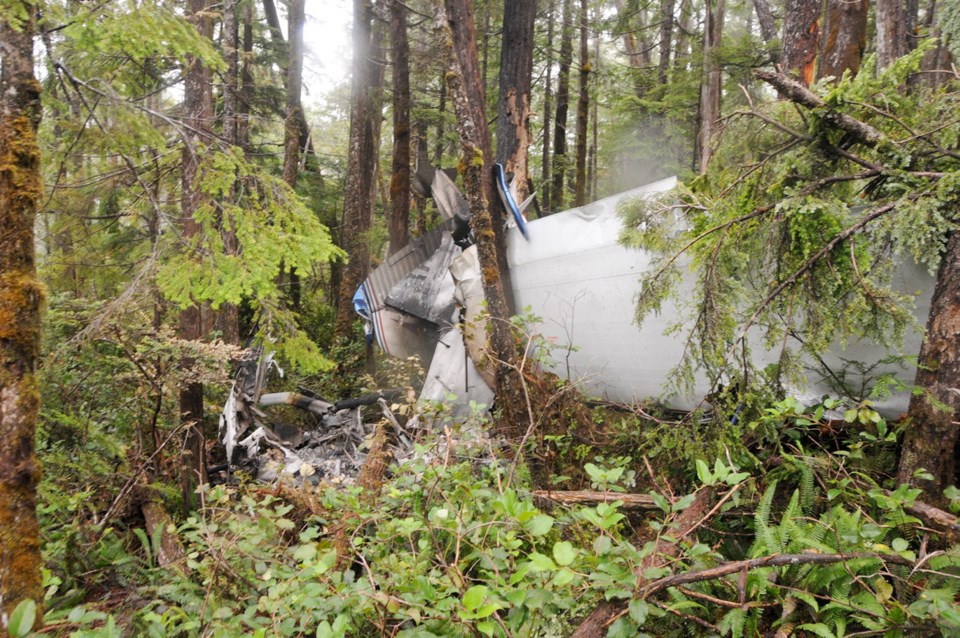A post-crash fire may have been a key factor in the deaths of two people aboard an Air Nootka float plane that crashed Friday in the wilderness north of Tofino, a Transportation Safety Board investigator says.
The TSB, whose investigators reached the remote site Monday, has previously recommended Transport Canada change its regulations to reduce the risk of fires after a crash, said Bill Yearwood, manager of air investigations.
“Survivable accidents are still causing loss of life when a post-crash fire ensues,” Yearwood said on Monday.
The charter flight crashed shortly after taking off from Hesquiat Lake, en route to Gold River. A pilot and five passengers — hikers on an excursion organized by the Alpine Club of Canada — were on board. The pilot and a Courtenay man died, two passengers were seriously hurt, and two others escaped injury.
The pilot’s name has not been released, but the dead passenger has been identified by friends as Charles Turner, 63, of Courtenay.
A TSB safety study released in 2006 showed that in 128 of 521 plane crashes, fire or smoke inhalation contributed to the cause of death or serious injuries.
“Most of these accidents were otherwise survivable,” the TSB said in its report looking into a similar crash Oct. 27, 2011, in Richmond. In that crash, two pilots died in the subsequent fire.
None of the recommendations previously made by the TSB to reduce the risk of post-crash fires have been implemented by Transport Canada, Yearwood said.
In Friday’s crash, the coroner will determine the cause of death of the pilot and passenger.
Yearwood said he didn’t have information yet on where the passengers were seated and whether that was a factor in survivability.
Whether someone survives a crash like this often depends on the speed the aircraft is going before it comes to a sudden stop, Yearwood said.
“Looking at the pictures, the aircraft collided with the trees and then fell vertically through the trees. The trees and floats and all the stuff that gets in contact first absorbs energy. The investigators on site will be able to tell me how that worked.”
The investigators will be looking at marks on trees to determine if the aircraft was climbing, descending or banking in one direction as it struck the forest.
The investigation will also determine whether the aircraft had enough power to fly or if the pilot lost control, he said.
Once the on-site phase is over, the wreckage will be moved to another location for a more detailed look at its controls, Yearwood said. Maintenance records will also be examined, he said.
It’s clear from survivors’ accounts that there was very little time for the pilot to react.
“We know he didn’t have time to say too much — he just got a short mayday out. We know the [cockpit] alarms went off immediately after that mayday,” Yearwood said.
“We have no reason to focus on anything yet,” he said. “The fact we have a post-crash fire just brings up something that we’ve already investigated.”



